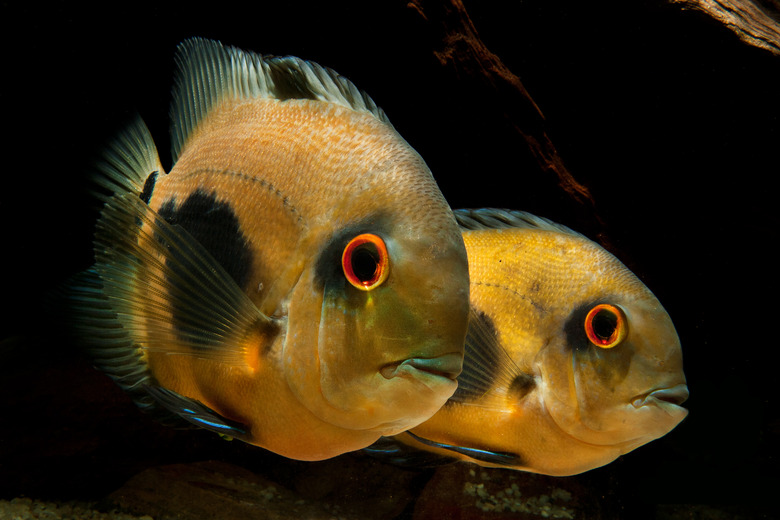How To Tell The Sex Of Cichlids
There's nothing more exhilarating to a fishkeeper than to make your aquarium self-sustaining by raising your own fry to replenish your tank's population. When it comes to cichlids, it can be easy to tell the gender of many species through physical differences. However, many species look so much alike that cichlid sexing isn't necessarily accurate until you see them spawning.
Determining male and female cichlids
Determining male and female cichlids
With an estimated 2,000 to 5,000 species found throughout the world, you can bet there is plenty of diversity in color, shape, and tank requirements that can make cichlid keeping a lifelong fascination. It's important to know what type of cichlid you have in order to know the difference between male and female cichlids.
For example, in many Lake Malawi species, the male is bigger than the female. However, in some cichlid aquarium species hailing from Lake Tanganyika, such as the masked Julie cichlid (Julidochromis), the female is bigger than the male. In other species, both male and female cichlids appear identical, and you'll only know which is male and female when they're spawning.
It won't be possible to tell most species of cichlids' genders until they are sexually mature. When buying cichlids at the fish store, people typically choose the biggest fish in the tank. That means that the biggest fish when you're buying wasn't the biggest one that was there yesterday. The fish could be at different ages and stages. The best bet is to buy many of one species that is right for your tank setup in a variety of sizes and color intensity to increase the odds of having a breeding pair at maturity.
Cichlid sexing at maturity
Cichlid sexing at maturity
As your cichlids become sexually mature, you'll likely start to notice subtle differences as they mature. Males will usually have pronounced facial features, such as their lips and forehead, as these are used to defend their mate from rival male fish and the nest from predators. They'll also develop longer, pointier fins, whereas a female's will stay shorter and more rounded, like the juvenile fins of both genders.
Male fish will typically act more aggressively, nipping at or chasing other fish away from the chosen female. They might also use their bodies to shield her from view. The female of many species is content to follow the male, hanging back around his tail to take advantage of this protection.
Some species have dimorphic qualities. The saulosi cichlid hatches with a yellow color. As males mature, they take on a vibrant blue with stripes coloration. The mature females remain yellow but intensify in color, making saulosis easy to identify. Not all blue cichlid types are dimorphic, however; females and males of many types are the same color.
Last resort: vent sexing
Last resort: vent sexing
Once you're sure your fish is sexually mature and you haven't seen any definitive signs of gender through either behavior or physical attributes, you can try gently vent sexing. This should be left as a last resort because it can be pretty terrifying for your fish, and there's a chance your fish could wriggle free and injure himself on the tank edge or hit the floor.
Should you decide to vent sex, scoop up your fish gently in a net. Keeping the fish partially underwater, grasp the fish around the back firmly but without so much pressure that it would injure the cichlid. Turn over the fish and look at the two holes below the anal fin. A female will have one large hole that is for egg laying and a smaller hole for excreting waste. If the holes are the same size, your fish is either a male or an immature female. The hole enlarges to allow the passage of eggs, so if your female hasn't yet laid any, she'll have two small vents like a male.
References
- Animal-World: Types of Cichlids
- Badmans Tropical Fish: Juidochromis Dickfeldi: Stats and Care of Dickfeld's Julie
- Discus.com: More on Sexing Discus Fish
- Quebec Cichlides: How to Tell if Your African Cichlid is Male or Female
- Fish Laboratory: Saulosi Cichlid (Pseudotropheus saulosi): Care & Tank Mates
- Seriously Fish: Powder Blue Cichlid
